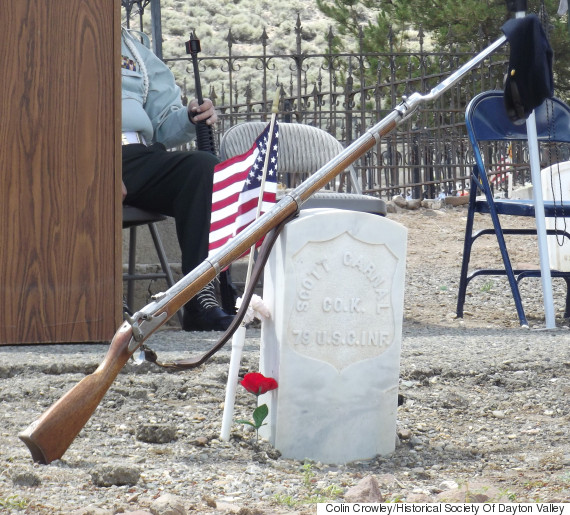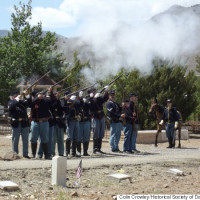Civil War vet to be honored 98 years after burial
Share
Explore Our Galleries
Breaking News!
Today's news and culture by Black and other reporters in the Black and mainstream media.
Ways to Support ABHM?
By Susan Skorupe, Reno Gazette-Journal
Scott Carnal was born a slave in Virginia about 1844 and died a free man and a Civil War veteran in Dayton, Nevada in June 1917.
On Sunday, the Historical Society of Dayton Valley gave Carnal the ceremonial burial he probably didn’t get nearly 100 years ago.
“We want to see that he has the military funeral he probably never had,” said Linda Clements, the ceremony coordinator.
Much is known about Pvt. Scott Carnal, thanks to Clements’ and others’ research into military, census and other public records. John Riggs of the Sons of the Union Veterans started digging for details earlier this year, obtaining information through military records.
[…]
Carnal was born in Rock Alum Springs, Virginia, later part of West Virginia. He later was sold to John Campbell of Louisiana. In 1863, Carnal ran away and joined Company K, 1st Kansas Colored Infantry of the Union Army, later the 39th USCIN.
“He managed to be a soldier for only a few months,” Clements said. “He was in the Battle of Honey Springs in what today is Oklahoma, and was wounded by a musket ball in the left thigh.”
Treated and discharged from the Army in October 1863, Carnal earned a pension of $8 a month. He had difficulty working because his leg wound didn’t heal properly. Doctors told him if he didn’t have the leg amputated he would die, but Carnal went to Colorado to work in mining.
“But he ended up running a fruit stand,” Clements said.
In March 1874, doctors amputated Carnal’s leg in Denver. He applied for and received military disability, but his leg didn’t heal well and he couldn’t wear an artificial limb. Carnal moved to a veterans’ home.
[…]
Eventually, a government official determined that Carnal’s pension was long overdue and he was awarded the funds.
Read the full article here.
Read more Breaking News here.











Comments Are Welcome
Note: We moderate submissions in order to create a space for meaningful dialogue, a space where museum visitors – adults and youth –– can exchange informed, thoughtful, and relevant comments that add value to our exhibits.
Racial slurs, personal attacks, obscenity, profanity, and SHOUTING do not meet the above standard. Such comments are posted in the exhibit Hateful Speech. Commercial promotions, impersonations, and incoherent comments likewise fail to meet our goals, so will not be posted. Submissions longer than 120 words will be shortened.
See our full Comments Policy here.